A couple of readers have expressed an interest in seeing more from those mines near Mitsero that were briefly mentioned in the previous Blog post about Cyprus in general. So as a first single-topic Cyprus post I picked this. It’s primarily a photo essay, but also with a bit of a story and some background info.
It’s actually about two locations and comprises three types of mines, all not far from the village of Mitsero (ca. 18 miles/30 km south-west of Nicosia), so they are subsumed under that short name here, for simplicity’s sake. They are “ghost mines”, i.e. long abandoned, but surprisingly accessible.
The first of the two locations that our little group of explorers (see previous post) headed to is the former Kokkinogia mine. Here you can find both a vertical shaft with a head frame above it for underground extraction, as well as a horizontal tunnel dug into the mountainside. This first photo shows the entrance to that tunnel:

In the past there was apparently a gate that was padlocked, but you could still squeeze through. When we arrived at the mine, the gate stood wide open and you could just walk straight in. The first stretch still lets a bit of daylight in, but I also already turned on my high-lumen torch to take this picture (already featured in the previous Blog post):
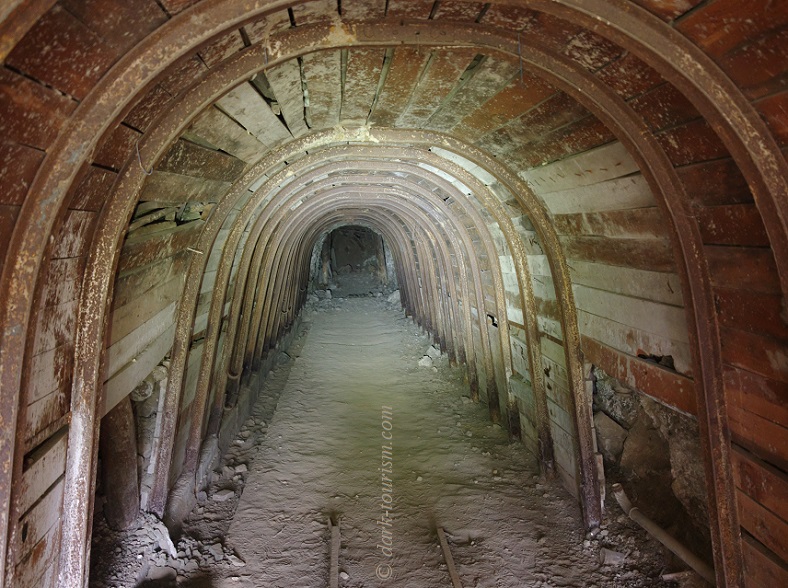
A little further in, a kind of gate or door appeared, but this was bent on one side so that you could squeeze past.
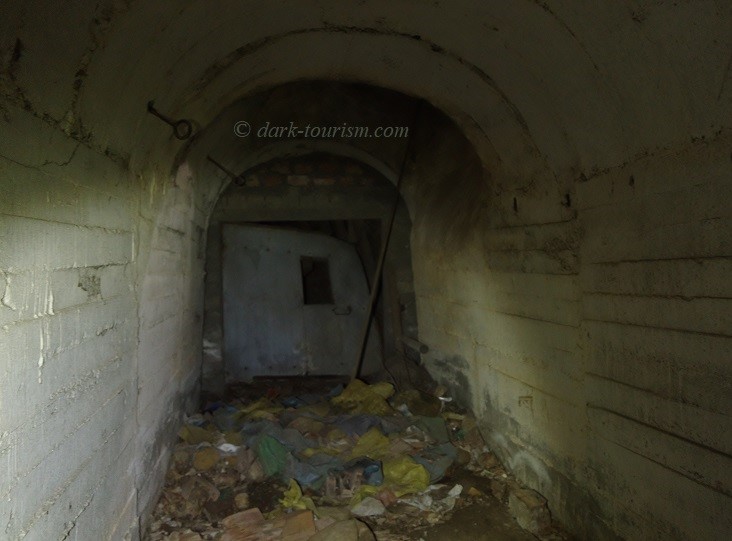
As you can see there was also lots of rubbish left behind, presumably by earlier “intruders” (and probably not proper urbexers, whose motto “leave nothing but footprints, and take nothing but pictures” would, or should, have prevented such littering).
At that point the tunnel was stabilized by solid concrete, further inside still it became raw rock, and without a torch it would have been 100% pitch-black dark:
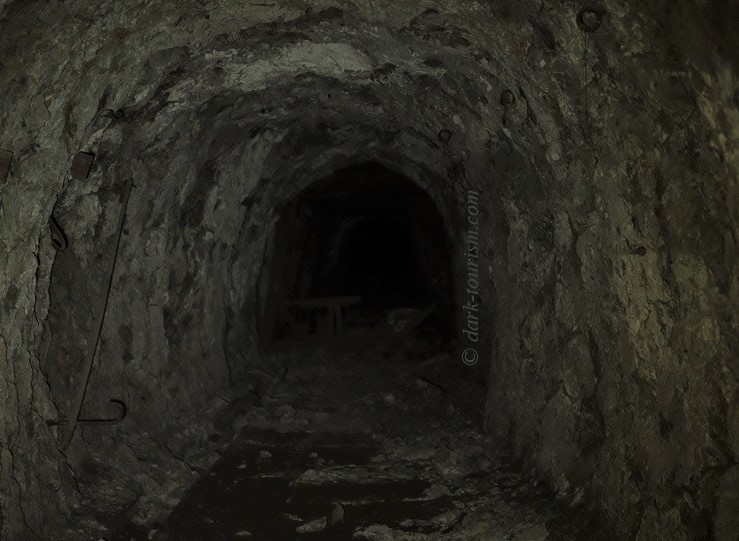
At one point deep inside there was a kind of side-tunnel branching off, and that looked decidedly dodgy. Some of the wooden stabilization logs had already fallen down (same photo as the featured one at the top of this post):
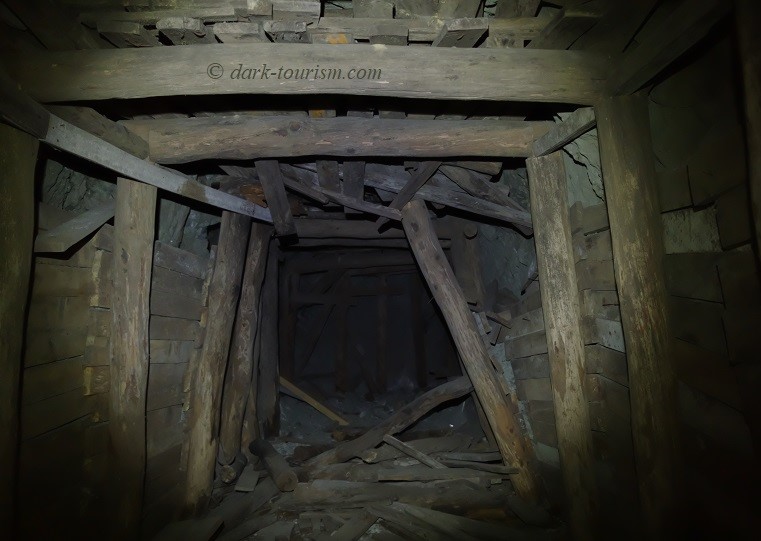
I wouldn’t have wanted to enter that part of the mine. But the main tunnel felt dicey enough in some places – and I had to suppress nightmarish thoughts of getting trapped inside a collapsed mine.
There was also plenty of debris on the ground, so you had to tread carefully:
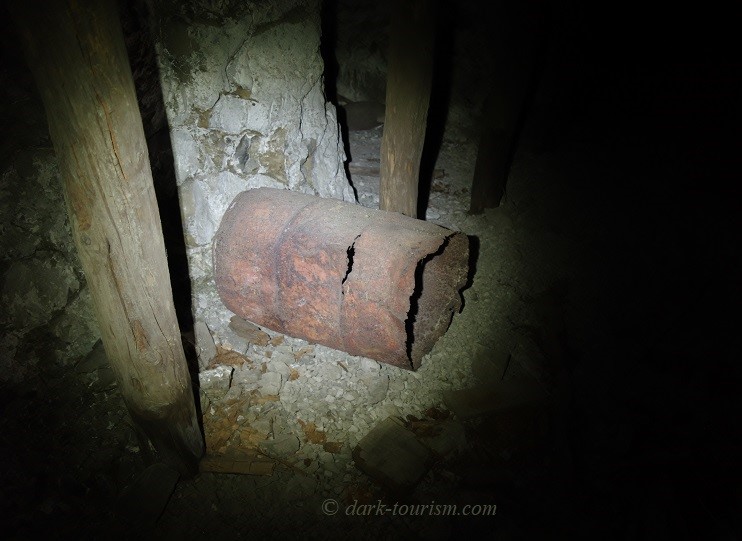
Eventually the tunnel came to a sudden end – and it looked to me like it had simply been filled with concrete to block any further access (you can still see some stabilization logs poking out of the concrete):
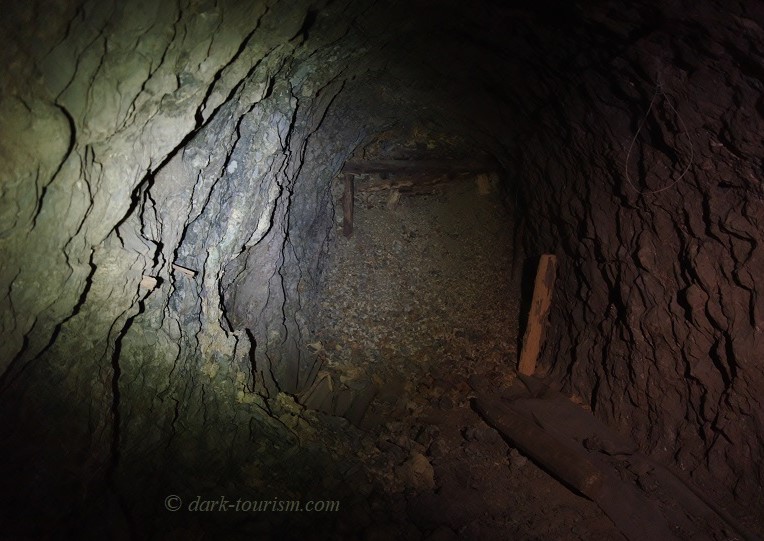
Anyway, this was the point when we had to turn round and retrace our steps towards the entrance. And I admit I felt some relief when we finally got out and saw the light of day again.
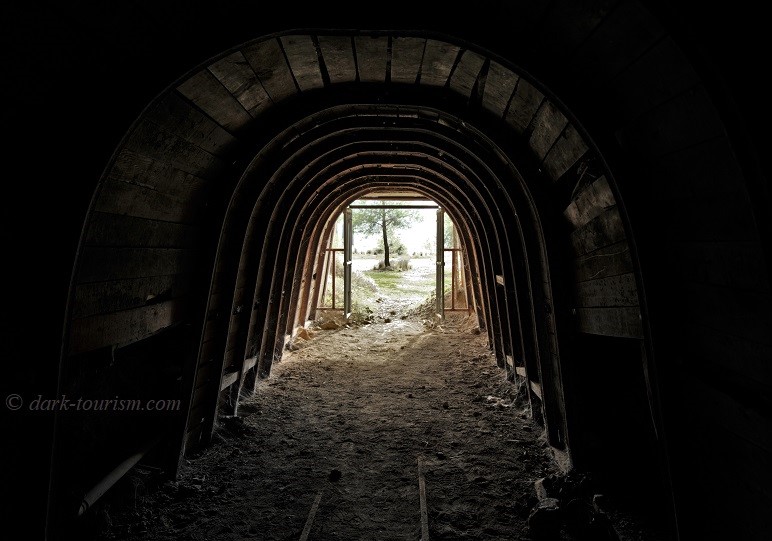
How deep into the mountain did we go? Hard to say; distances are tricky to gauge in the dark and when you have to progress slowly because of all that debris lying about. My GPS camera also didn’t allow any clues, because obviously once inside the tunnel I lost the signal. But I would very roughly guess that we must have gone in for between 100 and 200 metres.
Just a stone’s throw from the tunnel entrance can be found a hulk of above-ground mining structures, in particular this head frame:
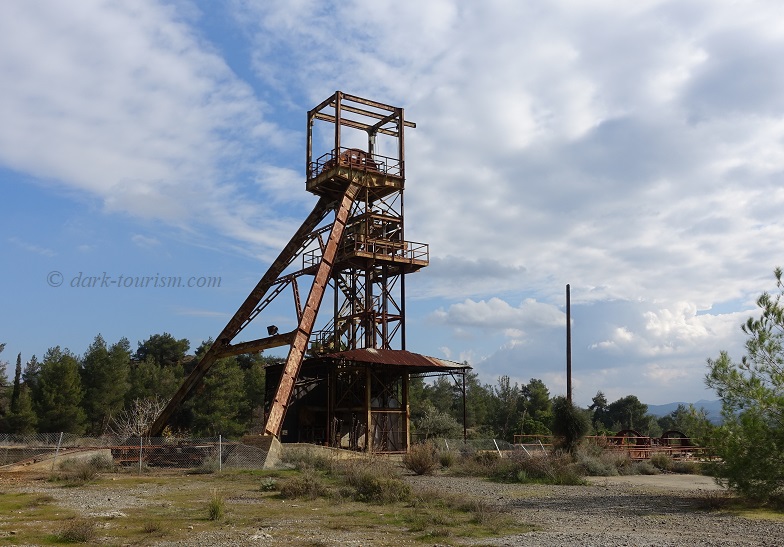
This stands above a former mine shaft leading deep underground. It was here that the first of a serial-killer’s victims was found in 2019 – by a German dark tourist (not me!), after heavy rain had flooded the shaft and brought the semi-decomposed corpse to the surface. It was the beginning of a long police investigation. Forensic examinations revealed the victim to have been a Filipino woman. She had been using a dating app and it was through this clue that the perpetrator, who used the app to find his victims, could eventually be identified: a Cypriot army officer called Nikos Metaxas. He confessed to having murdered five women in total (all of foreign nationality) between 2016 and 2018; in addition he also murdered the young daughters of two of the women. Metaxas was eventually given seven life sentences – the highest sentence ever in Cypriot legal history. Yet, apparently Metaxas, if his conduct in prison is fine, could get out on parole after having served 25 years, which is when he will be 60.
But back to the mine. In front of the head frame above the mine shaft is a large rusty metal structure that looks like it was for distribution of extracted ore and for loading it, presumably on to trucks:
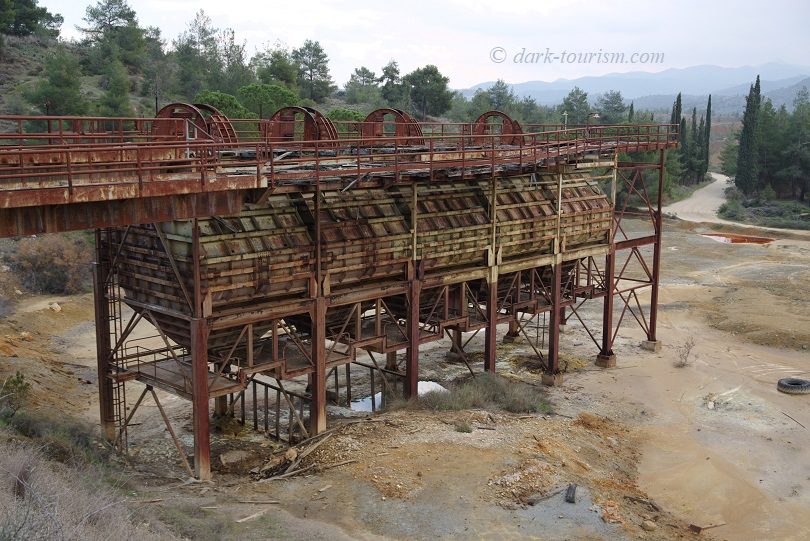
You can also climb to the top of the head frame. Care has to be taken at the bottom because of several deep holes in the ground, but once on the stairs it was quite safe. The metal steps were still in pretty good condition. From the top you get this view of the loading bridge below and the heavily polluted area around it (just look at those deep-red puddles!):
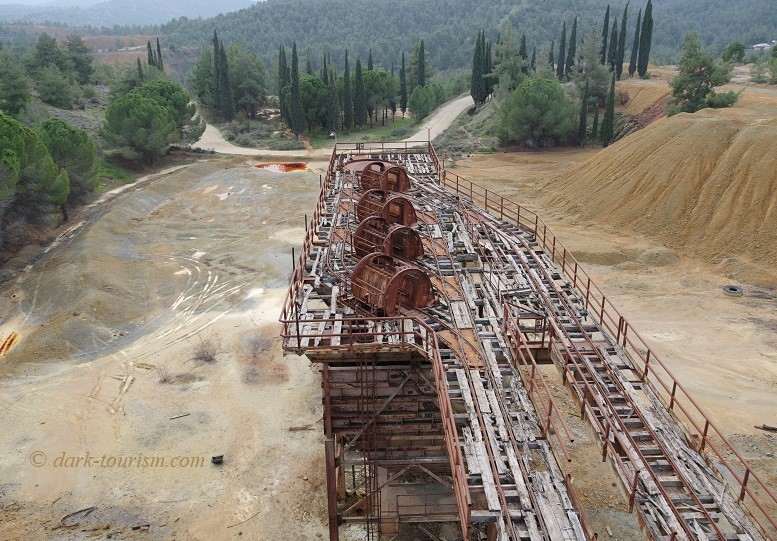
Back at the bottom of the head frame you can look down the upper part of the mine shaft – and this is where the first serial-killer victims would have been discovered (see above):
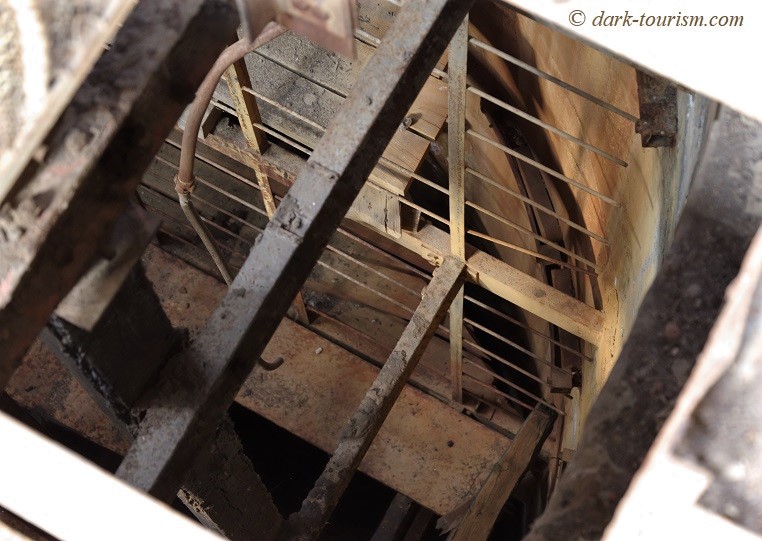
Just behind the head frame stands the associated machine hall from where it would have been operated:
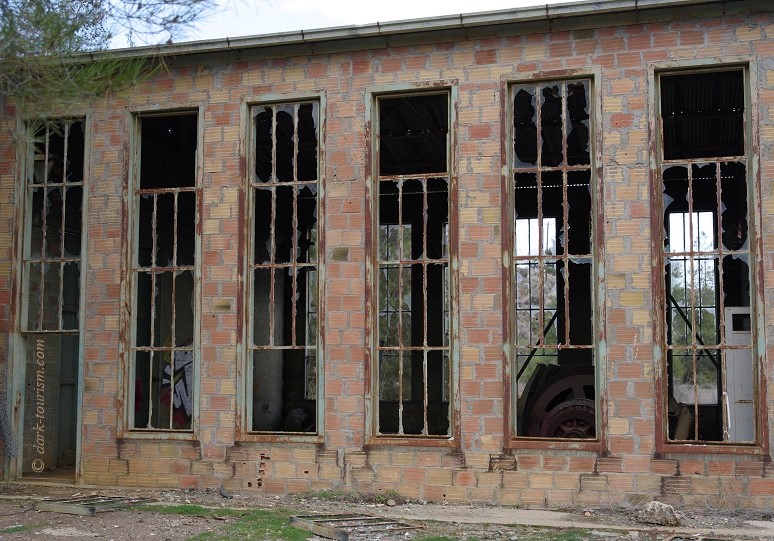
Inside you can see the cable drums for lowering (and lifting back up) the ‘cages’ that would have gone down the shaft to take miners to their workplace and bring extracted ore to the surface. Now they are “ropeless”.
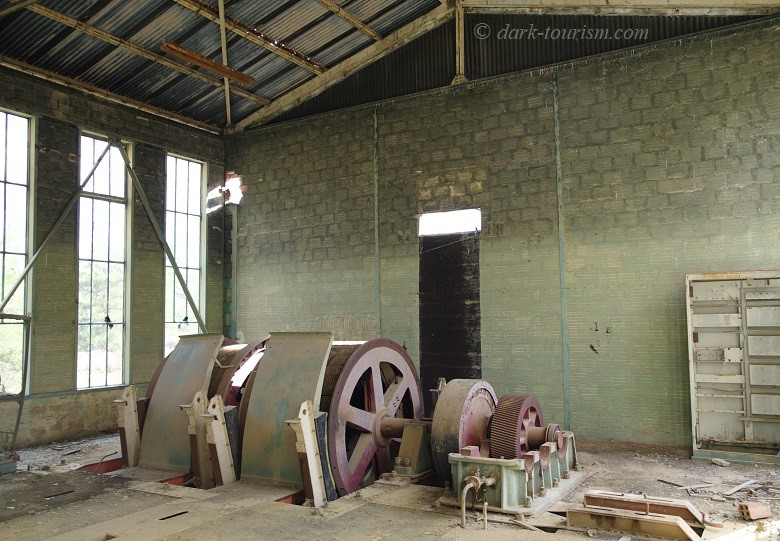
The other location featuring the third type of mine near Mitsero is a former open-cast surface mine, in which a lake of groundwater has accumulated since the mine was given up. This used to be the Kokkinolimni mine (this photo also already featured in the previous post):
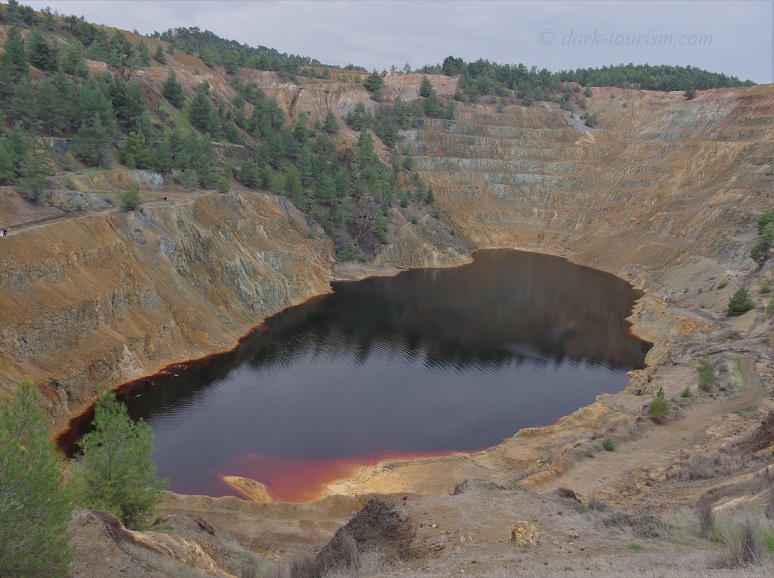
Due to chemical pollution left by the mining operations, the water has taken on a deep red hue – which has also given rise to the epithet “Blood Lake”. That’s only metaphorical, of course – except that at least one of the serial killer Metaxas’ victims was found dumped in it.
The colour of the water is said to change with the seasons (or even during the course of the day), but when we were there it presented itself in picture-perfect blood red.
The site is these days surrounded by a fence and the gate in it is permanently locked. But there’s a big hole in the fence some 20m from the gate, so you can easily slip through. And many people do. Unlike at Kokkinogia, which we had all to ourselves, here there were several cars already parked outside the fence and we saw at least two parties of visitors down by the lake’s shore. So clearly people routinely ignore these warning signs that stand by the fence at the top of the pit:
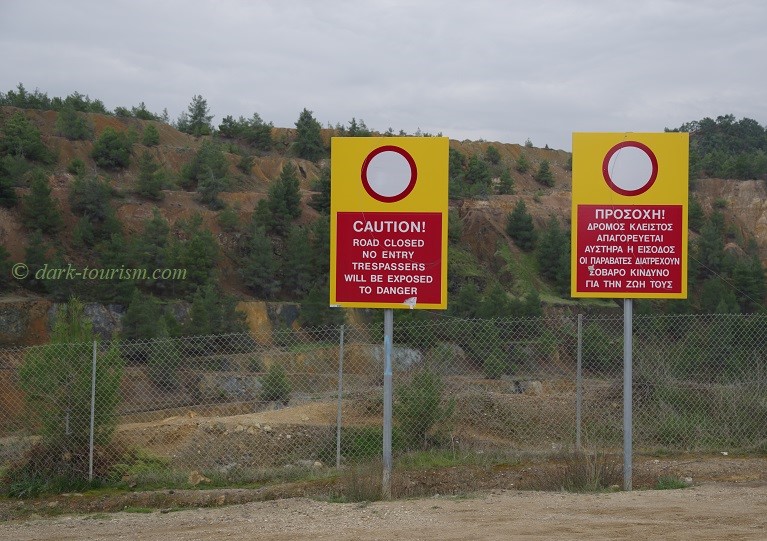
Elsewhere such signs would have simply said “no trespassing” or even “trespassers will be prosecuted”, yet here no such threat was expressed. Instead it was simply pointed out that going in there could be dangerous. That could almost be interpreted as an invitation by some intrepid travellers and urbexers 😉 (and makes the “no entry” bit easily ignored).
Once inside the fence’s perimeter you can follow the tracks zigzagging all the way down to the lake’s shore at its western end.
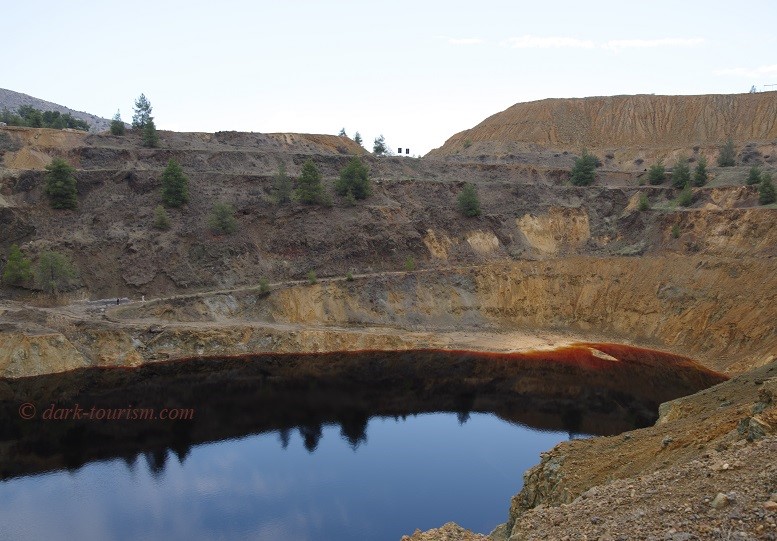
From the track passing above the shallowest – and hence reddest – part of the lake you could see murky swirls whose shape resembled that of galaxies.
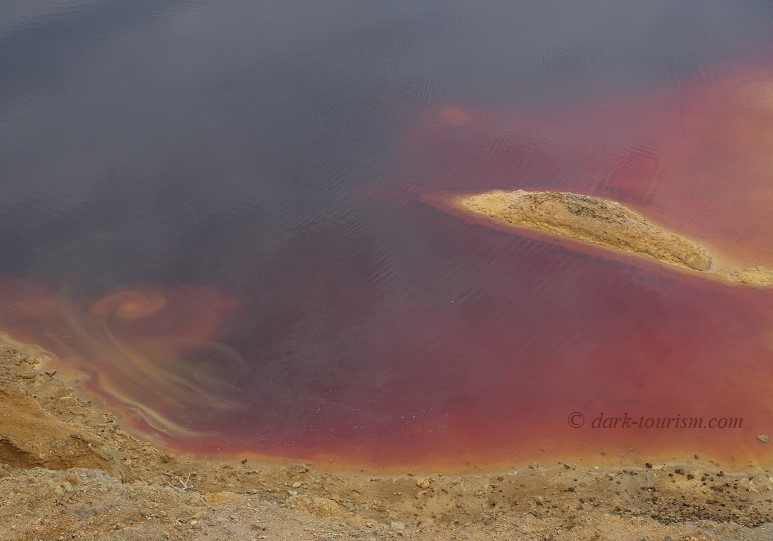
Needless to say it would not be advisable to go for a swim in these waters – you can practically see they are toxic. What exactly the poisonous cocktail in these waters may be is not quite clear – nor is it clear what was mined here. Many sources say copper, but others say iron or sulphur (or pyrite, as in Kokkinogia, which is a mineral also used to extract sulphur from). Other sulphurous lakes I’ve seen (e.g. at Aso or Ijen) were rather a blueish green in colour, so copper or iron may be more likely here. Anyway, I don’t know the exact chemistry involved (and I’m far from being an expert in that field), but the look of the lake was warning enough not to go in.
Some people before us though must have come pretty close, though, as these deep footprints in the yellowish mud right by the shore suggest (I did not go that far myself, not wanting to ruin the trainers I was wearing):
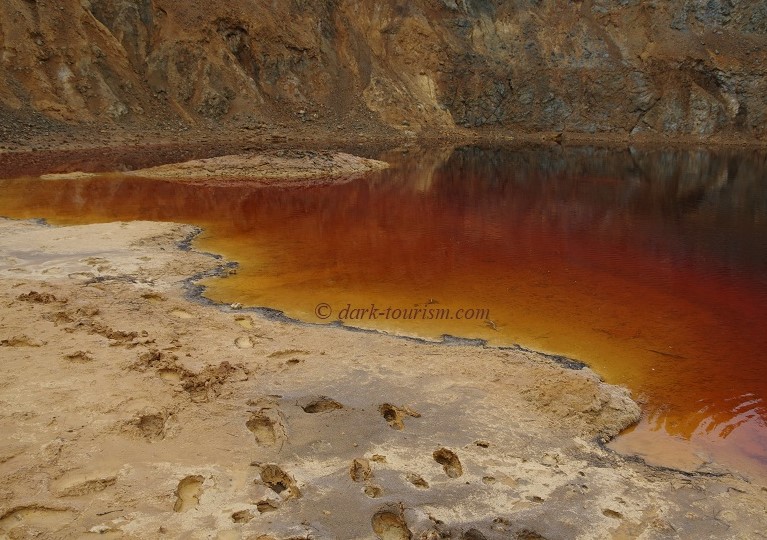
Given the gaping wound in the landscape that such an open-cast mine always is, together with the toxicity of the blood-red waters, this is definitely a dark-tourism attraction. But that aside I also found it quite beautiful and inviting photography, e.g. of this neat reflection in the water of the mine’s wall and the trees at the top; a perfect true-colour mirror reflection to the right, and ominously red-hued to the left:
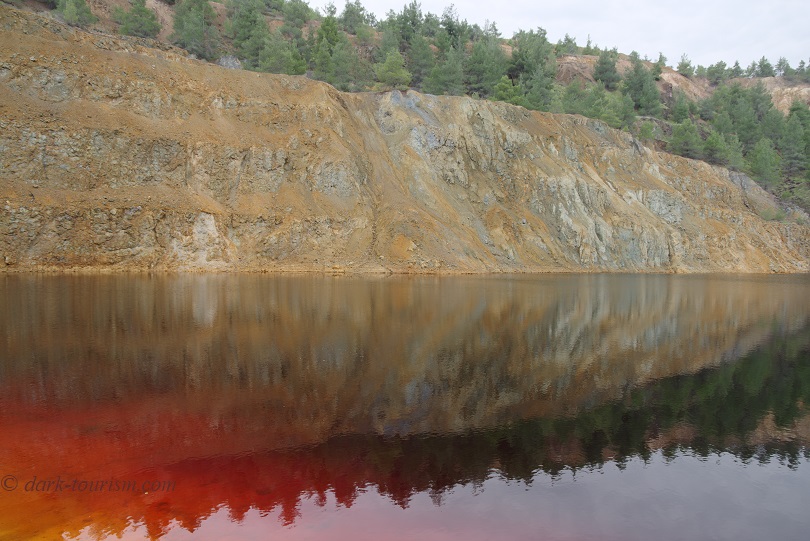
But so much for Mitsero. I haven’t decided yet what next to post about from all the material I gathered on my early January trip to Cyprus. We’ll see …
.
.
.
.




4 responses
Scary – spooky – yet fascinating!
indeed!
Really interesting post Peter, thank you
Thank you Peter for a great post